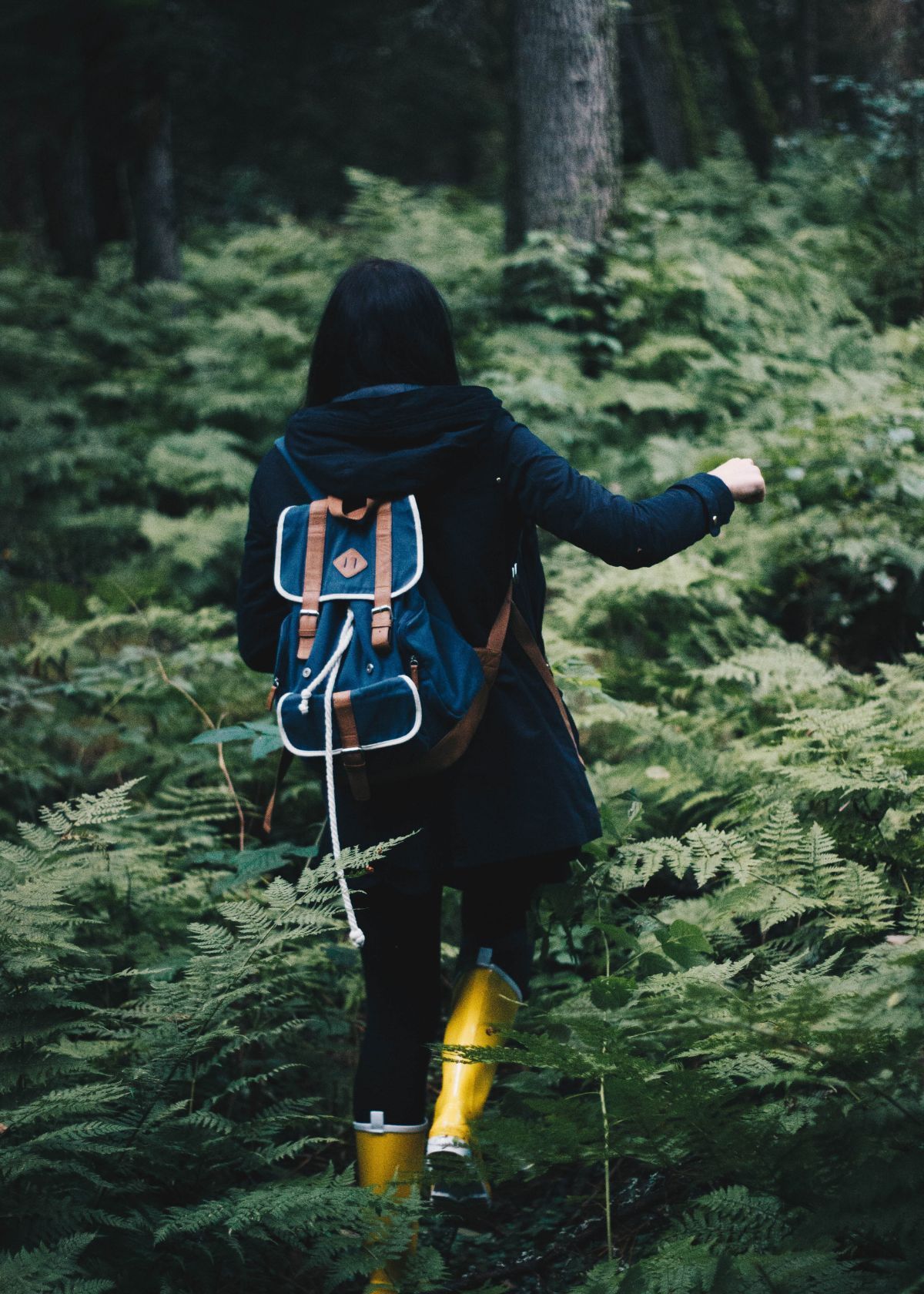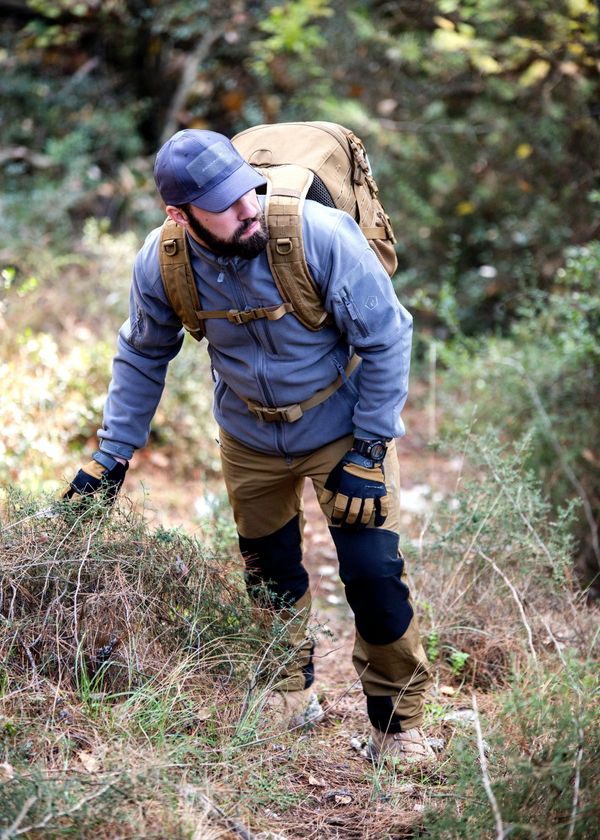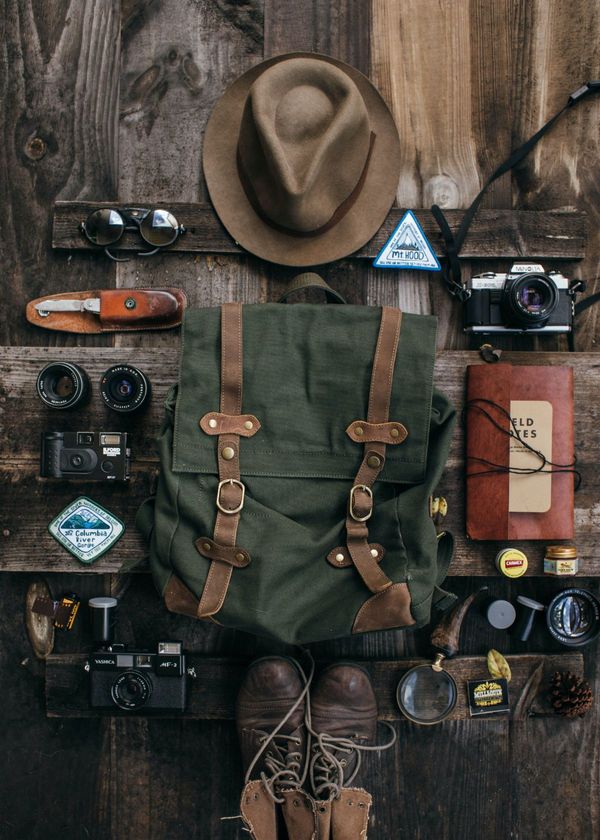Have you ever been on a day hike or exploring a new city on foot, only to find yourself carrying a bulky backpack designed for multi-day trips? If so, you might be familiar with the discomfort and inconvenience that comes with an oversized backpack. That's where the day pack comes in.
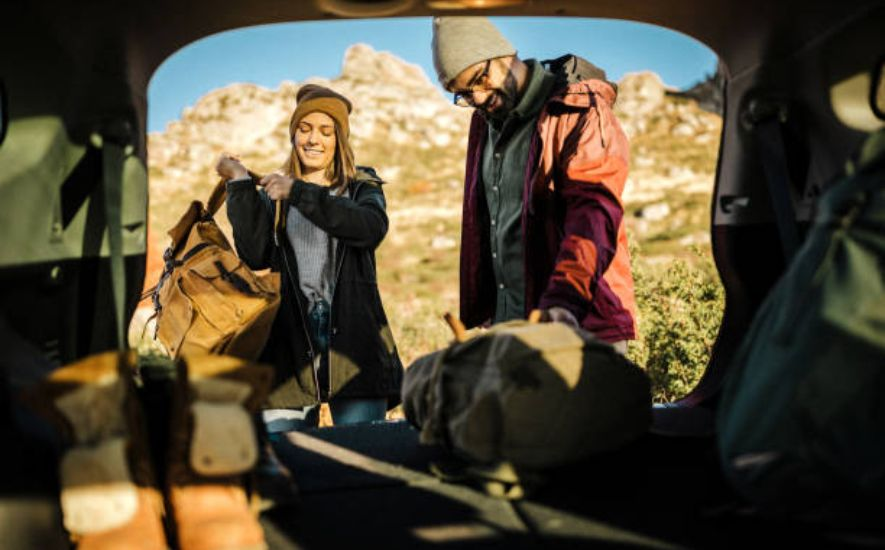
What Is A Day Pack?
A day pack is a compact and lightweight backpack designed for day trips, hikes, and other short adventures. It's the perfect size for carrying heavier loads you need for a day out, such as water, snacks, sunscreen, and a camera. Unlike larger backpacks, day packs are designed to be comfortable to wear for extended periods of time, with padded shoulder straps and ventilation systems that reduce sweat and chafing.
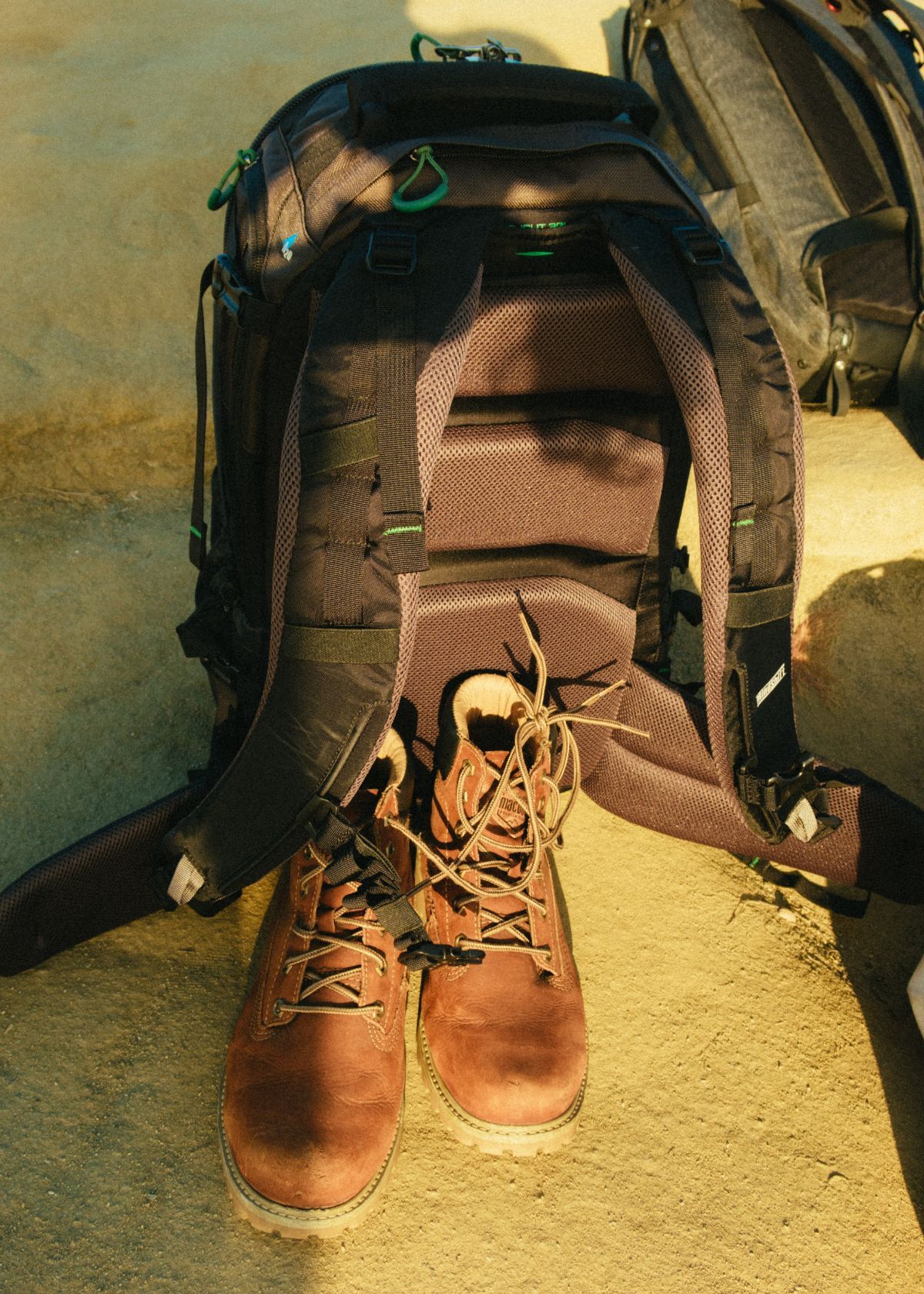
But small packs aren't just practical; they can also be stylish and customizable. Many outdoor brands offer day packs in a variety of colors and designs, allowing you to express your personal style while exploring the great outdoors. And with the option to add on accessories like hydration systems, extra water bottle pockets, and even trekking pole attachments, an entire pack can be tailored to fit your specific needs and preferences.
Whether you're planning a day hike or a city adventure, a day pack is a perfect companion to keep you comfortable, organized, and ready for whatever the day brings.

The Evolution of the Day Pack
The day pack has come a long way since its humble beginnings as a simple knapsack. Throughout history, it has evolved to suit the needs and preferences of its users, adapting to changing times and lifestyles.
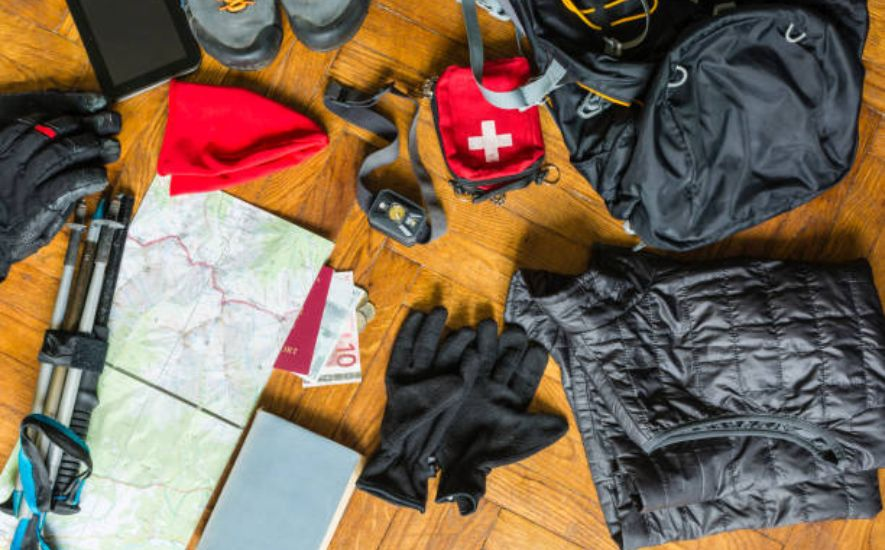
Today, it is a ubiquitous accessory found in the hands of hikers, commuters, and travelers alike. Join me on a journey through time as we explore the fascinating evolution of the day pack.
I. Early History
The concept of a day pack can be traced back to the earliest civilizations, where people would carry basic necessities such as food, water, and tools in simple cloth or leather bags. As societies developed and trade expanded, these bags became more sophisticated, with the addition of pockets, compression straps, and buckles.
II. The Advent of the Backpack
The modern backpack, as we know it today, can be traced back to the early 1900s. These early backpacks were primarily used for camping and hiking and were made from durable materials such as canvas and leather. The addition of a metal frame in the 1930s made them even more comfortable and functional.
III. The Rise of the Day Pack
As the world became more urbanized and people started to commute to work and school, a new type of backpack emerged – the day pack. These smaller, lightweight backpacks were designed to carry just the essentials, such as a laptop, a notebook, and a water bottle. They were often made from synthetic materials like nylon and polyester, which made them more affordable and durable.
IV. The Age of the Technical Pack
With the rise of outdoor sports like hiking, climbing, and skiing, the day pack once again evolved to meet the needs of a more specialized audience.
As they were called, technical hiking packs were designed with features such as hydration systems, specialized pockets for gear, and adjustable suspension systems for a more comfortable fit. They were made from lightweight, waterproof materials and could withstand the most rugged terrain.
V. The Future of the Day Pack
As we look to the future, it's clear that the day pack will continue to evolve and adapt to changing times and lifestyles.
With the rise of technology, we may see the integration of smart features like GPS tracking, built-in solar panels, and wireless charging. Sustainability is also becoming a top priority, and we can expect to see more day packs made from recycled and eco-friendly materials.
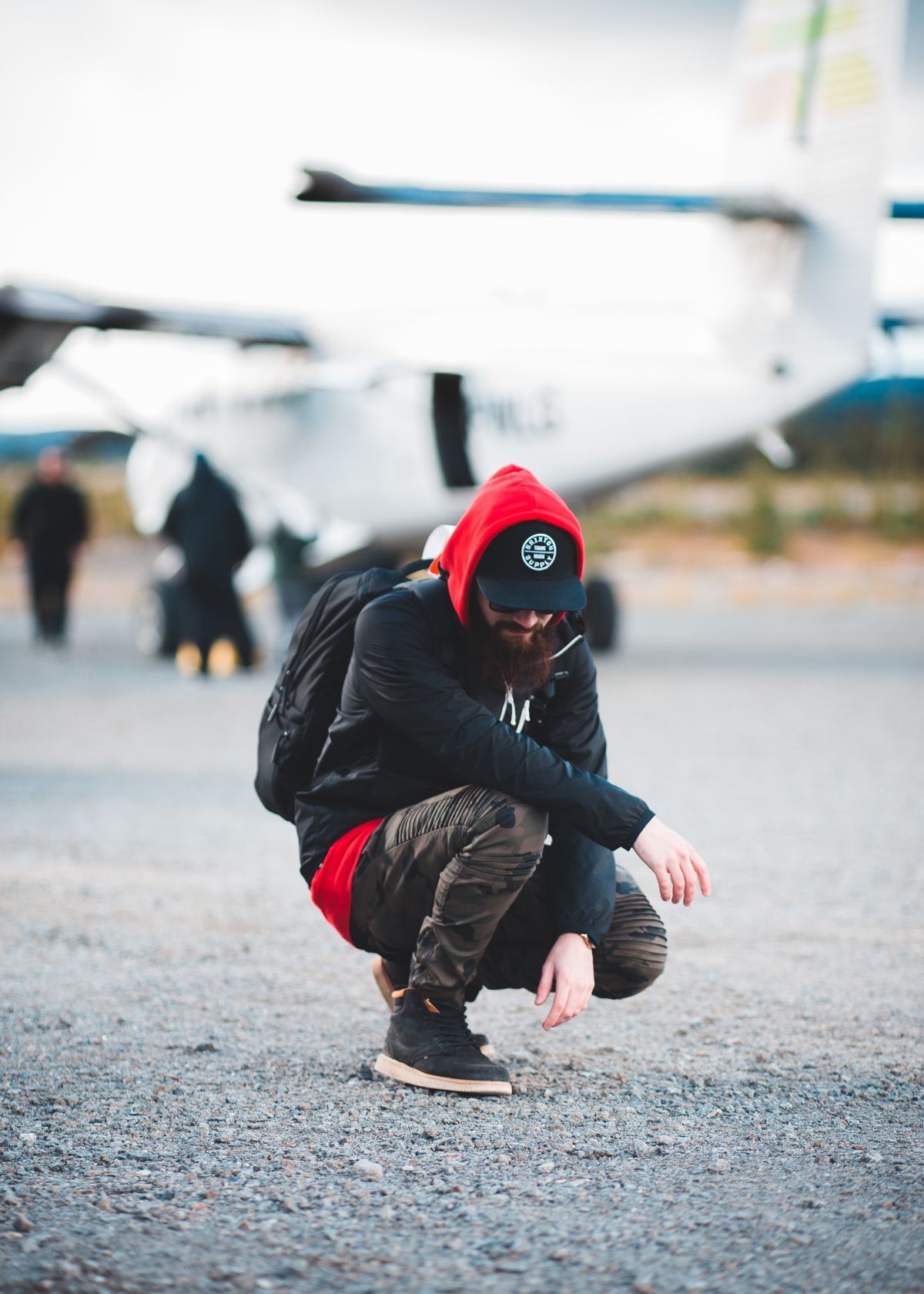
Choosing the Perfect Day Pack
When it comes to exploring the great outdoors, having the right gear can make all the difference. And for day hikes or shorter trips, a good day pack is essential. But with so many options out there, how do you choose the perfect one for your needs?
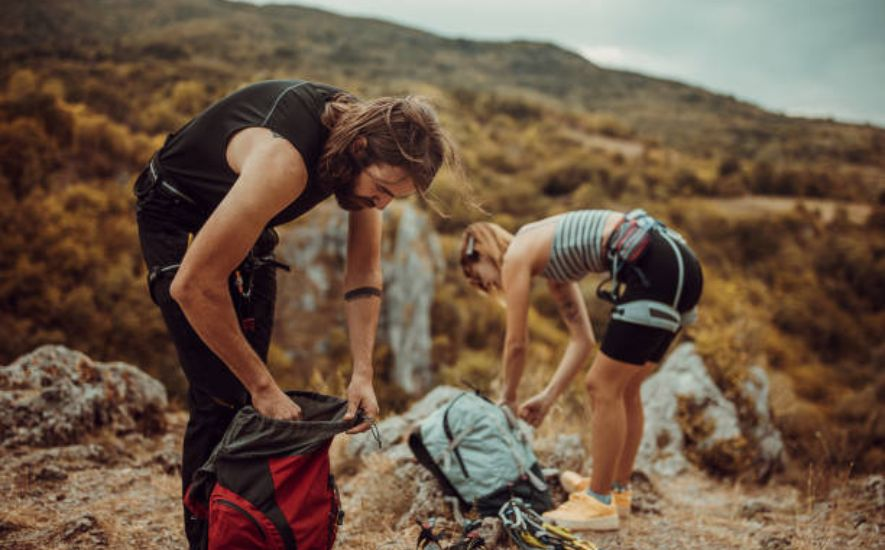
Organization
Having organized gear can save you time and hassle when you're out on the trail. Look for a pack with plenty of pockets and compartments to keep your gear organized and easily accessible.
Some packs even come with specialized sleeping bag compartments for things like water bottles or sunglasses. And don't forget to consider the placement of the pockets – some packs have pockets on the hip belt, which can be a convenient place to stash small items like snacks or a phone.
Durability
Finally, it's important to choose a pack that is durable and built to last. Look for packs made from high-quality materials like ripstop nylon or Cordura, which can withstand the wear and tear of the trail.
Pay attention to details like reinforced stitching and sturdy zippers, which can help prevent damage over time. And don't forget to consider the pack's warranty – a good warranty can provide peace of mind and protect your investment.

Features of a Day Pack
As humans, we are always on the move, whether traveling to work, running errands, or hiking up a mountain. And to carry heavy loads and all the essentials, a daypack becomes a necessary companion. A daypack is not just a bag; it's a tool that carries everything you need for a successful day trip.
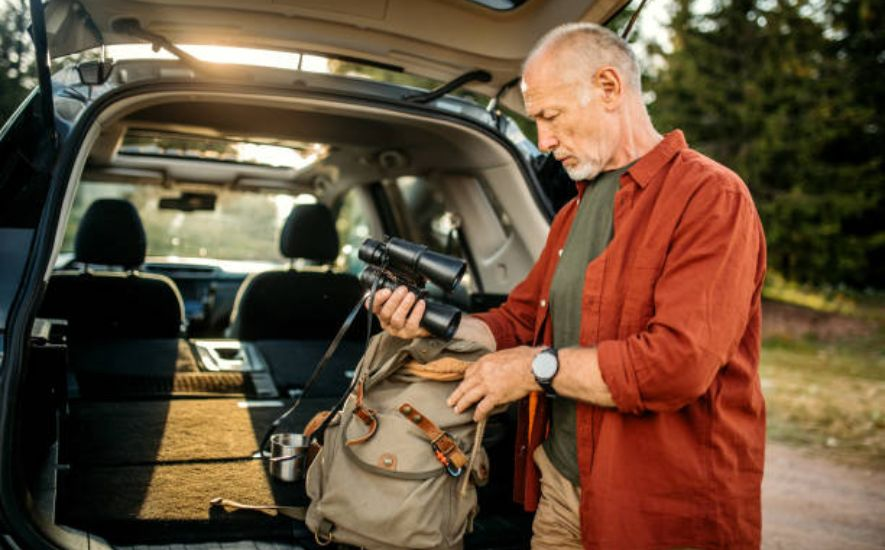
Size and Capacity
The first feature of a daypack is its size and capacity. A daypack should be big enough to carry everything you need but small enough to fit comfortably on your back. The ideal size of a daypack is between 20 to 35 liters, and it should have enough space to carry essentials like water, snacks, sunscreen, and a first-aid kit.
Comfort and Fit
The second feature of a daypack is its comfort and fit. A daypack should fit snugly on your back, and the weight should be evenly distributed to avoid any discomfort or strain. The shoulder straps and back panel should be padded and breathable to provide comfort, even during long hikes or walks.
Organization and Accessibility
The third feature of a daypack is its organization and accessibility. A daypack should have multiple compartments and pockets to help you organize your belongings. It should also have external attachment points, such as loops or sternum straps, to hold items like trekking poles or water bottles. Additionally, a daypack should have easy access to the main compartment, allowing you to retrieve items when needed quickly.
Durability and Weather Resistance
The fourth feature of a daypack is its durability and weather resistance. A daypack should be made of high-quality materials that can withstand wear and tear and be water-resistant to protect your belongings from rain or snow. It's essential to look for a daypack with reinforced stitching, durable zippers, and a sturdy internal frame.
Style and Design
The fifth feature of a daypack is its style and design. A daypack should be stylish and reflect your personality. It should be available in different colors and designs to suit your taste and preferences.

Benefits of Using a Day Pack
As humans, we're wired to explore and experience new things. Whether it's a hike through a forest, a day at the beach, or a stroll through a city, there's always something to discover. And when exploring, having the right gear can make all the difference. One essential piece of equipment for any adventure is a daypack.
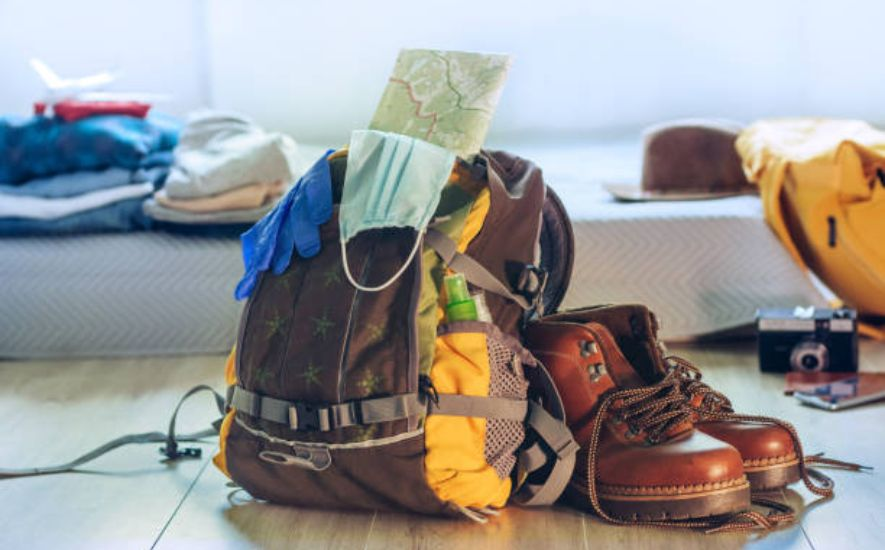
A day pack is a small backpack perfect for day trips and excursions. It's lightweight, versatile, and has plenty of benefits for anyone looking to get out and explore.
Storage Space
Despite their compact size, day packs have plenty of storage space. They typically have several pockets and compartments that make organizing and accessing your gear easy. You can use them to carry everything from water bottles and snacks to cameras and extra clothing.
Plus, many other packs come with external straps or ice axe loops that allow you to attach additional gear, like trekking poles or a sleeping bag. This makes them a versatile and practical choice for any adventure.
Protection from the Elements
Another benefit of using a day pack is that it protects from the elements. Many day packs are made from durable materials that are water-resistant or waterproof, so your gear will stay dry even in wet conditions.
Additionally, some day packs have built-in rain covers that you can use to keep your pack and its contents dry. This makes them a great choice for outdoor activities like hiking, camping, or kayaking, where you need to protect your gear from rain, snow, or other elements.
Versatility
Finally, day packs are incredibly versatile. They can be used for various activities and adventures, from day hikes and cycling trips to urban exploring and travel. Because they're small and lightweight, they're easy to pack and transport, which makes them ideal for anyone who likes to travel light.
And because they come in a variety of sizes and styles, you can find a day pack that's perfect for your needs, whether you're looking for something that's sleek and minimalist or something that's loaded with features.
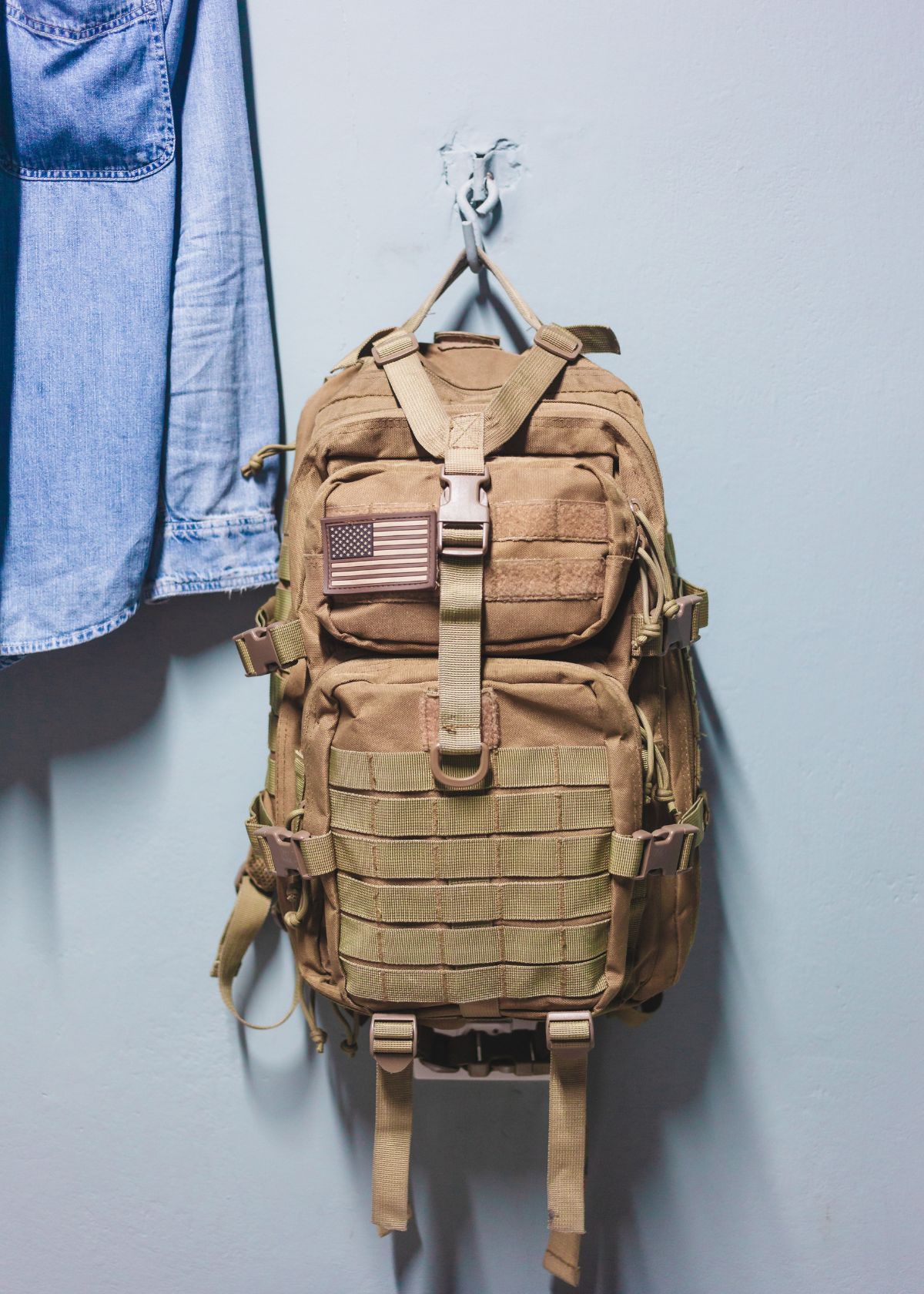
Best Uses for a Day Pack
As you prepare for your next adventure, whether a day hike or a city tour, you'll need a reliable daypack to carry your essentials. A good hiking daypack not only keeps your belongings organized but also makes your journey more comfortable. But what are the best uses for a daypack, and how can you get the most out of it?
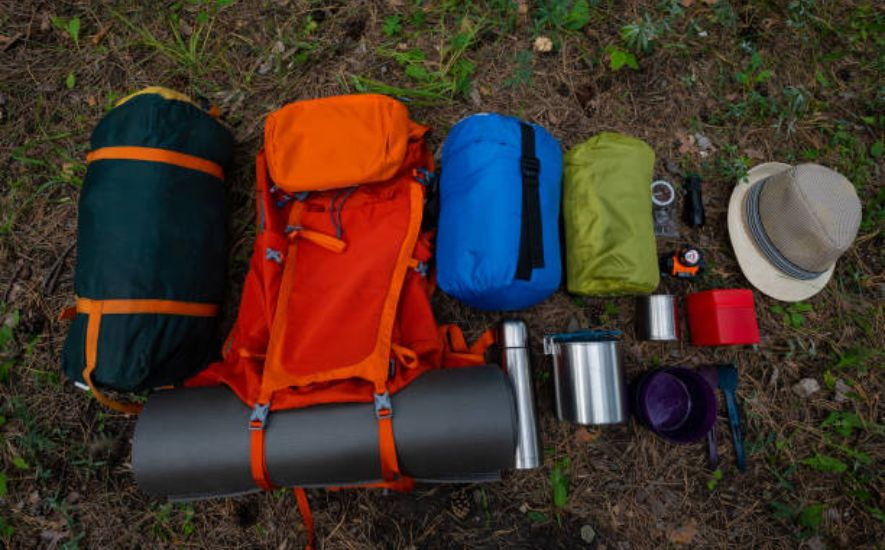
Hiking and Outdoor Activities
When it comes to hiking and outdoor activities, a daypack is an essential piece of gear. It allows you to carry all the necessary items, such as water, snacks, sunscreen, a first-aid kit, a map, and other essentials.
When selecting a backpacking pack for hiking, look for a pack with sturdy straps and a comfortable back panel. It should also have several compartments and pockets to keep your gear organized.
Travel and Sightseeing
A daypack can also be a perfect travel companion, whether you're exploring a new city or sightseeing in the countryside. Use it to carry your camera, guidebook, water, and other essentials. It's a convenient way to keep your hands free while you explore.
Choose a daypack with RFID-blocking technology to protect your credit cards and passport from theft. If you're traveling on a budget, you can use your daypack as a carry-on bag on flights to avoid additional luggage fees.
Commuting and Everyday Use
If you're commuting to work or school, a daypack is a practical way to carry your laptop, books, and other work essentials. It's also great for running errands or heading to the gym.
Look for a daypack with a padded laptop sleeve and several compartments to keep your belongings organized. You can also choose a climbing pack with reflective materials for safety during night commutes.
Creative Uses
A daypack can be used for more than just carrying your belongings. It can also serve as a creative tool for photography or sketching. Use your daypack as a makeshift tripod for your camera or a surface to sketch on while you're out and about. It can also be used as a pillow or cushion during long trips or as a makeshift changing room while you're on the go.

Maintenance and Care for Day Packs
As an avid adventurer, you understand the importance of having the right gear for any expedition. And one of the most crucial items you need is a day pack.
Day packs are versatile, lightweight, and compact, making them ideal for short hikes, bike rides, and urban exploring. However, like any gear, day packs require maintenance and care to keep them functioning optimally.
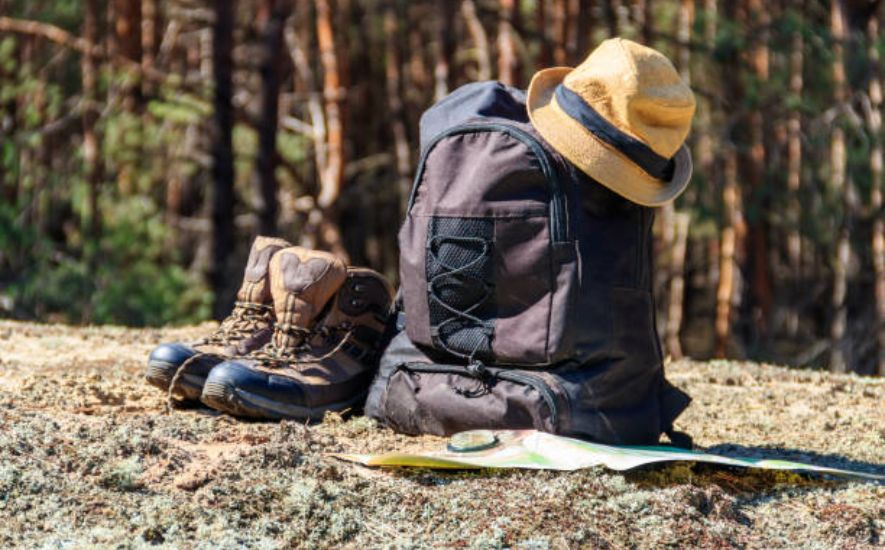
Cleaning Your Day Pack
The first step in maintaining your day pack is to keep it clean. Dirt, sweat, and grime can accumulate over time, making your bag look and smell unpleasant. Cleaning your day pack is relatively simple. Start by emptying all the contents from your bag and shaking out any loose dirt or debris.
Then, using a soft-bristled brush, gently scrub the bag's exterior, paying close attention to any heavily soiled areas. Once you've cleaned the outside, turn the bag inside out and repeat the process. Finally, wipe down the bag with a damp cloth, removing any soap residue.
Repairing Rips and Tears
No matter how careful you are with your day pack, it will experience wear and tear over time. Small rips and tears can compromise the integrity of your bag and make it less functional. Fortunately, repairing these issues is relatively easy.
Start by assessing the damage and determining if it's something you can fix yourself or if you need to take it to a professional. If you're comfortable repairing yourself, use a needle and thread to sew up the tear. If the damage is more extensive, take it to a professional to have it repaired.
Maintaining Zippers and Straps
The zippers and straps on your day pack are some of the most critical components of the bag. They allow you to secure your gear and make it easy to carry.
Over time, zippers can become stiff, and straps can become worn, making them less effective. To maintain your zippers, use a zipper lubricant to keep them smooth and free of dirt and debris. For straps, inspect them regularly for signs of wear and tear, and replace them as needed.
Storing Your Day Pack
When you're not using your day pack, it's essential to store it correctly. Storing your bag improperly can cause damage and make it less effective. Always empty your bag before storing it, and make sure it's completely dry. Then, store your bag in a cool, dry place away from direct sunlight. Avoid folding or compressing your bag, as this can cause the fabric to weaken over time.

How to Pack a Day Pack for Different Activities
As the warm rays of sunshine invite you to explore the great outdoors, ensuring that your day pack is packed with all the necessary gear for your chosen activity is essential.
Whether hiking, biking, or simply strolling through the park, having the right essentials in your pack can make all the difference in your enjoyment and success.
Bring the Essentials
No matter what activity you're engaging in, certain essentials should always be in your day pack. These essentials include:
- Water: Staying hydrated is crucial during any physical activity. Make sure to bring enough water for the duration of your activity, and consider packing a water filtration system if you'll be out for an extended period.
- Snacks: Pack energy-rich snacks such as nuts, dried fruit, and protein bars to keep your energy levels up.
- First aid kit: Accidents can happen, so it's important to be prepared with a small first aid kit containing bandages, antiseptic wipes, and pain relievers.
- Navigation tools: Bring a map, compass, or GPS device to avoid getting lost during your activity.
- Sun protection: Don't forget to pack sunscreen, sunglasses, and a hat to protect yourself from the sun's harmful rays.
Tailor Your Pack to Your Activity
Depending on your chosen activity, you may need to pack additional gear to ensure your comfort and safety. Here are some activity-specific items to consider:
- Hiking: Pack a lightweight rain jacket, hiking boots, trekking poles, and a headlamp in case you're out after dark.
- Biking: Bring a repair kit with spare tubes, tire levers, and a multi-tool, as well as a helmet and padded shorts for comfort.
- Photography: Pack your camera, lenses, and tripod, as well as extra batteries and memory cards.
Pack Efficiently
When packing your day pack, it's important to pack efficiently to maximize space and minimize weight. Start by packing heavier items at the bottom of your pack, closer to your back, to ensure better weight distribution.
Roll clothing items instead of folding them to save space, and use compression bags to reduce the size of your gear further. Finally, use the external pockets of your day pack to store items you'll need to access quickly, such as your water bottle or snacks.
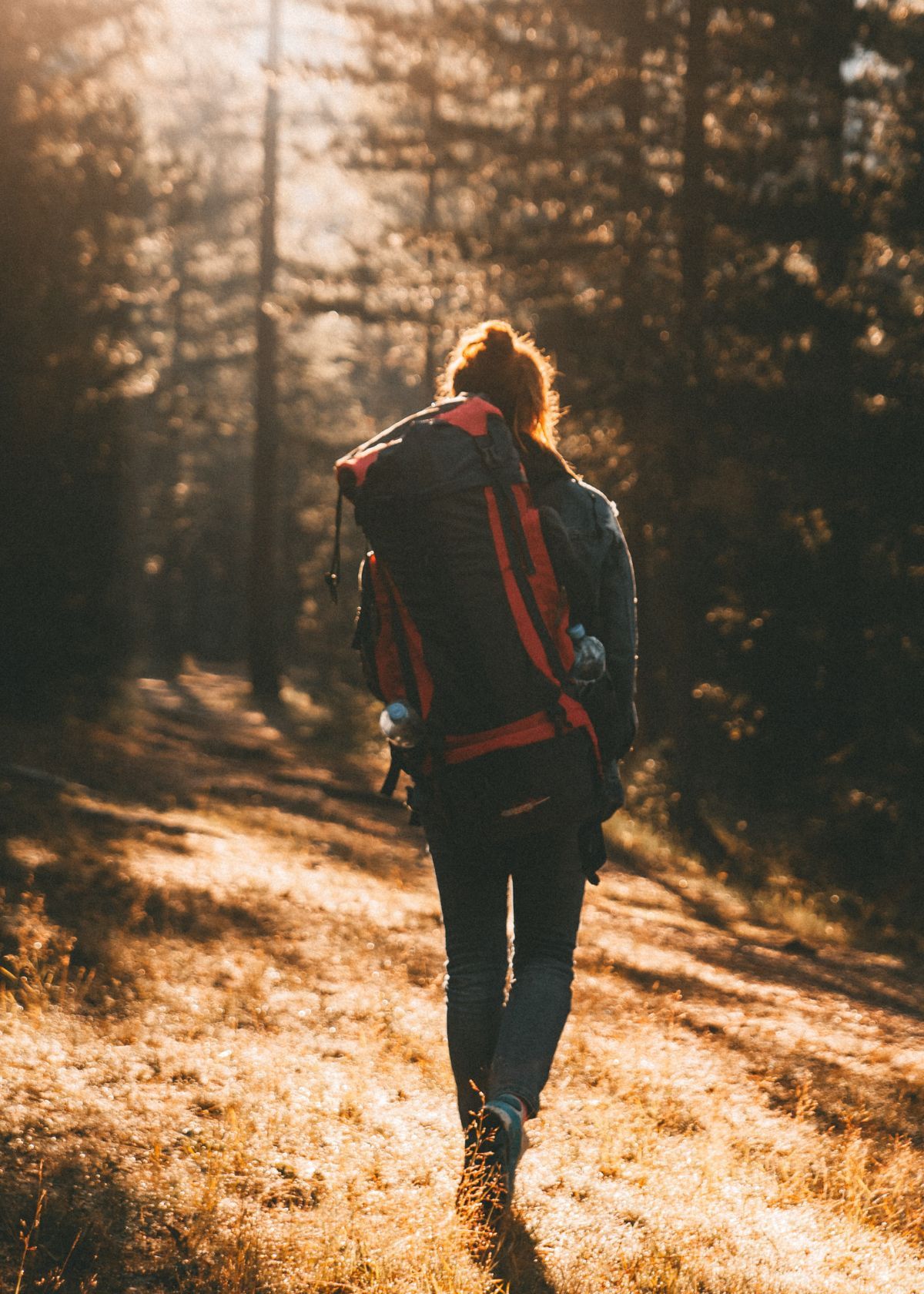
Frequently Asked Questions (FAQs)
A day pack is a backpack or fanny pack that offers various pockets and compartments for storing your gear. It's the perfect size for day hikes, short hikes, bike rides, and other outdoor adventures.
Is a day pack the same as a backpack?
A day pack is a type of backpack designed for use during day trips or other short excursions. Day packs are typically smaller and lighter than larger backpacks designed for longer trips, and they often have features like multiple compartments and pockets to help organize and carry small items.
However, while a day pack is a type of backpack, not all backpacks are day packs. Backpacks can come in a wide range of sizes and designs, and some are intended for use in specific activities such as hiking, camping, or commuting.
What size is a day pack?
A day pack is typically a backpack designed to hold enough gear and supplies for a day trip or a short hike. The size of a day pack can vary depending on the specific model and brand, but they generally range in volume from 10 liters to 30 liters.
A 10-liter day pack would be suitable for carrying only the essentials, such as a water bottle, a snack, and a light jacket, while a 30-liter day pack could accommodate additional gear like a camera, a first-aid kit, and a full lunch.
Do I need a daypack?
Whether or not you need a daypack depends on your specific situation and needs. A daypack is a small backpack designed to carry your essential items for a day trip or excursion. If you plan on taking day trips or going on hikes where you'll need to carry water, snacks, a camera, sunscreen, a jacket, or other items, then hiking daypacks can be very useful.
If you're traveling and plan on exploring a city or sightseeing, a daypack can also come in handy for carrying your wallet, phone, map, and other essentials. A daypack is also useful for carrying items like books, a laptop, or a change of clothes if you plan to spend the day outside your home or hotel.
Ultimately, whether or not you need a daypack will depend on your specific plans and the items you need to carry with you. If you anticipate needing to carry a variety of items on a day-to-day basis, then a daypack can be a useful investment.
What is the purpose of a day bag?
A day bag is a type of bag designed to carry the essentials you might need during the course of a day. The purpose of a day bag is to provide a convenient way to carry items such as a wallet, phone, keys, sunglasses, water bottle, snacks, and any other items that you may need while you are out and about.
Day bags come in a variety of styles, shapes, and sizes, ranging from small pouches that can be worn around the waist to larger backpacks or messenger bags. They can be made of different materials, such as leather, canvas, or nylon, and may have additional features, such as pockets, zippers, or adjustable straps.
Conclusion
In conclusion, a day pack is more than just a simple backpack. It's a versatile and practical accessory that can significantly impact your outdoor adventures. Whether you're planning a day hike, a quick trip to the gym, or a weekend getaway, a day pack can be your trusty companion.
With its multiple compartments, durable materials, and comfortable straps, a day pack can keep your essentials organized and easily accessible. So, if you're an avid adventurer or just someone who loves to be prepared, a day pack is definitely worth investing in.
Choose the one that fits your needs and style, and get ready to explore the world easily and conveniently!



